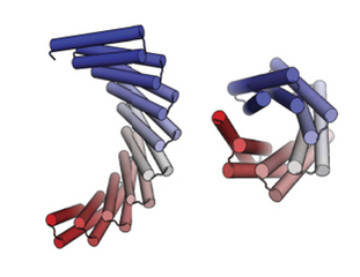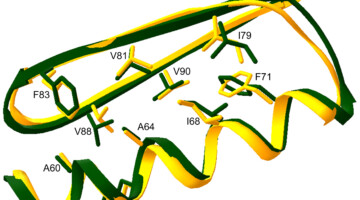Researchers have published a landmark study that used both crystallography and SAXS to validate computationally designed structures of novel proteins with repeated motifs. The results show that the protein-folding universe is far larger than realized, opening up a wide array of new possibilities for biomolecular engineering. Read more »![]()
![]()
Designer Proteins Target Epstein-Barr-Virus-Associated Cancer
Researchers used new protein design approaches to develop a potential inhibitor of Epstein-Barr-Virus-associated cancer. The study shows not just how to help defeat the virus, but also opens up a whole new way to design proteins against viruses and ultimately, cancer. Read more »![]()
![]()
Validating Computer-Designed Proteins for Vaccines
Computationally designed proteins that accurately mimic key viral structures can help produce better vaccines. The resulting protein structures, validated at the ALS, encourage the further development of this strategy for a variety of vaccine targets, including HIV and influenza. Read more »![]()
![]()
Designing a Novel Globular Protein Fold
A major challenge of computational structural biology has been to create, from scratch, new proteins with heretofore unobserved three-dimensional structures. Researchers have now developed and demonstrated a methodology for protein-structure prediction and design by creating the first artificial globular protein with a novel topology. Significantly, the x-ray structure agreed almost precisely with the structure specified by the computational model. Read more »![]()
![]()


